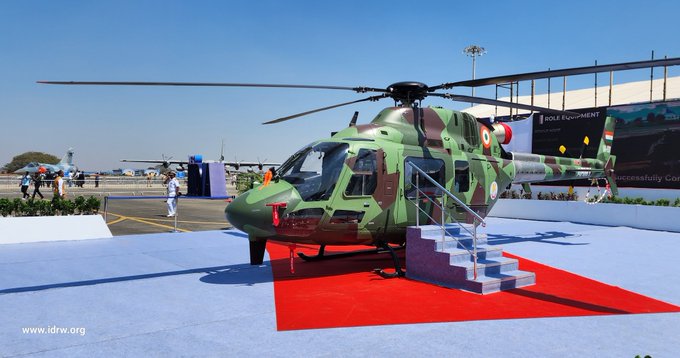SOURCE: RAUNAK KUNDE / NEWS BEAT / IDRW.ORG

The Indian Army and Air Force’s plans to acquire the indigenously developed Light Utility Helicopter (LUH) from Hindustan Aeronautics Limited (HAL) are facing a setback. Order placements are likely to be delayed by 18-24 months due to a confluence of factors.
The initial batch of six Limited Series Production (LSP) LUHs, crucial for user trials and feedback, is expected to be delivered between December 2024 and June 2025. This timeline is a consequence of a disagreement over the Automatic Flight Control System (AFCS). The Army reportedly requested the AFCS, which HAL maintains wasn’t part of the initial specifications. This necessitates additional testing and certification, pushing back delivery dates.
HAL has also encountered minor technical issues with the LUH prototypes, which are currently being rectified. Even after LSP deliveries, user clearance by the Army, spearheading the acquisition of 250 units, could take nearly a year. These helicopters are intended for reconnaissance and light cargo missions, replacing the ageing fleet of Cheetah and Chetak helicopters that have served for nearly six decades.
The overall procurement plan involves 400 LUHs for both the Army and Air Force. This might come at the expense of the additional 200 Kamov Ka-226T helicopters initially planned. The KA-226T, a twin-engine helicopter offering greater safety features, faces challenges due to Western sanctions on the Russian banking system and the French engine, which is not included in the Transfer of Technology (ToT) offered to HAL.
The delays in LUH procurement pose a challenge for the Indian Armed Forces, particularly with the imminent retirement of their existing light utility helicopters. While the LUH offers an indigenous solution, the extended wait time necessitates careful evaluation of operational requirements and potential alternatives. The situation also highlights the importance of clear communication and early problem-solving during the development phase of critical defence projects.
NOTE : Article cannot be reproduced without written permission of idrw.org in any form even for YouTube Videos to avoid Copy right strikes. Websites doing illegal reproductions will get DMCA and Legal Notices.